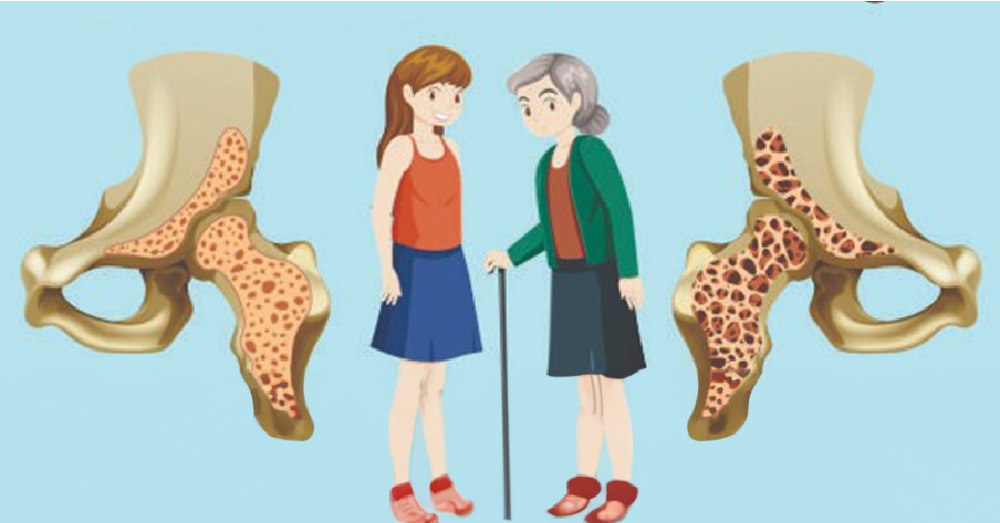Osteoporosis hospital in Lokapur

Osteoporosis
Osteoporosis is a systemic skeletal disorder characterized by low bone mass, microarchitectural deterioration of bone tissue, and an increased risk of fractures. It is often referred to as a “silent disease” because it progresses without symptoms until a fracture occurs.
Common Symptoms
- Silent Progression: Most patients remain asymptomatic until fractures occur.
- Fractures: Commonly occur in the hip, spine, and wrist.
- Pain: Chronic back pain due to vertebral compression fractures.
- Postural Changes: Kyphosis or “hunchback” due to vertebral deformities.
- Reduced Height: Gradual loss of height due to spinal compression.
Diagnostic Approaches
Bone Mineral Density (BMD) Testing:
- Performed using dual-energy X-ray absorptiometry (DEXA) scans.
- Provides a quantitative measure of bone density, commonly assessed at the spine, hip, or forearm.
T-Scores:
- Definition: A statistical comparison of an individual’s BMD to the peak bone mass of a healthy young adult.
- Interpretation:
- Normal: T-score ≥ -1.0
- Osteopenia: T-score between -1.0 and -2.5
- Osteoporosis: T-score ≤ -2.5
Fracture Risk Assessment Tool (FRAX):
- Estimates a 10-year probability of fractures based on clinical risk factors and BMD.
Laboratory Tests:
- Rule out secondary causes (e.g., calcium, vitamin D, thyroid function, parathyroid hormone levels).
Prevention Strategies
Lifestyle Modifications:
- Diet:
- Adequate calcium intake (1,000–1,200 mg/day depending on age).
- Vitamin D supplementation (600–800 IU/day).
- Consumption of foods rich in magnesium, phosphorus, and protein.
- Exercise:
- Weight-bearing exercises (e.g., walking, jogging).
- Resistance training to improve muscle and bone strength.
- Balance and flexibility exercises to prevent falls.
- Avoidance of Risk Factors:
- Smoking cessation.
- Limiting alcohol intake.
- Diet:
Fall Prevention:
- Improving home safety (e.g., adequate lighting, non-slip rugs).
- Vision correction and physical therapy for balance improvement.
Osteoporotic Fractures
- Typical Locations:
- Hip: Often requires surgical intervention; significant morbidity and mortality.
- Spine: Leads to chronic pain, deformities, and reduced lung capacity.
- Wrist: Common in early stages of osteoporosis.
- Consequences:
- Reduced mobility and quality of life.
- Increased dependence on caregivers.
- Higher mortality risk post-hip fracture.
Treatment Modalities
Pharmaceutical Interventions:
Antiresorptive Agents:
- Bisphosphonates (e.g., alendronate, risedronate): Inhibit bone resorption by osteoclasts.
- Denosumab: A monoclonal antibody that reduces osteoclast activity.
- Selective Estrogen Receptor Modulators (SERMs) (e.g., raloxifene): Mimic estrogen to maintain bone density.
Anabolic Agents:
- Teriparatide: Stimulates new bone formation by osteoblasts.
- Romosozumab: Dual-action (anabolic and antiresorptive).
Hormone Replacement Therapy (HRT):
- Effective in postmenopausal women but with associated risks (e.g., cardiovascular disease, breast cancer).
Calcium and Vitamin D Supplementation:
- Essential for bone health and to enhance the efficacy of other treatments.
Non-Pharmaceutical Interventions:
- Physical Therapy: Tailored exercises to improve strength, flexibility, and balance.
- Orthotic Supports: Braces for spinal fractures to provide support and pain relief.
- Pain Management: Analgesics and, in some cases, nerve blocks for chronic pain.
- Lifestyle Counseling: To enhance adherence to preventive and therapeutic strategies.
Osteoporosis management involves a combination of preventive strategies, early diagnosis, and individualized treatment to reduce fracture risk and enhance the quality of life. As an orthopedic surgeon, emphasizing patient education and proactive measures is critical to minimizing the long-term burden of this condition.